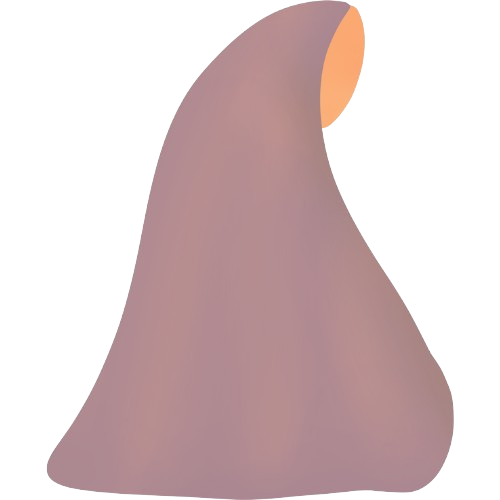In my journey of embracing modesty, the “prayer hijab” became an essential piece of my daily worship and a comforting reminder of faith. For many, including myself, the prayer hijab holds significance beyond being just a covering—it’s a garment of dedication and connection. Let me take you through my experience and all that I have learned about the prayer hijab, addressing the questions and curiosities you may have about it.
What is a Prayer Hijab?
The prayer hijab is a type of hijab specifically designed for prayer, providing full coverage in a quick, easy-to-wear style. It’s usually a long, flowing head covering that falls to the shoulders or below, allowing for modesty during Salah (prayer). Unlike regular hijabs, the prayer hijab doesn’t need pins or intricate wrapping, making it a practical choice for women like me who prioritize convenience during prayer times.
Why Do I Use a Prayer Hijab?
When I started wearing hijab, I used to pray in whatever I had on. But as I became more mindful of modesty, I realized that having a dedicated prayer hijab could elevate my spiritual experience. Wearing it feels like I’m stepping into a sacred space, helping me prepare mentally and spiritually. The prayer hijab became my go-to attire for Salah, and it’s a choice that has strengthened my connection to faith.
The Benefits of Having a Dedicated Prayer Hijab
Having a prayer hijab is immensely beneficial, both practically and spiritually. Here’s why I found it essential:
- Ease and Convenience: Many prayer hijabs are slip-on styles, so they’re quick to wear, especially during busy days.
- Modesty Assurance: They cover the body adequately without adjusting multiple layers.
- Focus on Worship: Wearing it helps me focus, shifting my mind to a more meditative state.
- Hygiene and Cleanliness: I love knowing that my prayer hijab is always clean and reserved for worship, helping me feel physically and spiritually pure.
Types of Prayer Hijabs: Choosing the Right One for You
When I began looking into prayer hijabs, I was pleasantly surprised by the variety available. Here are some popular styles:
- One-Piece Prayer Hijab: This is a single piece that you slip over your head, covering both head and shoulders. It’s simple and great for quick use.
- Two-Piece Prayer Hijab: This style includes a separate head covering and a cape or shoulder covering. I find it more versatile, especially for different body types.
- Jilbab or Khimar Style: Longer and sometimes reaching the waist, this hijab offers more coverage. I use it when I want to cover more of my outfit or feel more shielded.
The type you choose depends on comfort, coverage preference, and whether you need something portable or suitable for home use.
How to Care for Your Prayer Hijab
A prayer hijab deserves care, just like any beloved garment. After some trial and error, I’ve settled on a few care tips to keep it fresh and long-lasting:
- Hand Wash When Possible: This prevents wear and tear on delicate fabric.
- Use Mild Detergent: Harsh chemicals can fade or damage the fabric.
- Hang Dry: Avoid the dryer, as it can shrink or warp the material.
- Iron on Low Heat: For prayer hijabs made from cotton or linen, low heat keeps it looking new.
By caring for my prayer hijab, I ensure it’s always in perfect condition, ready to accompany me in my moments of worship.
Common Questions About the Prayer Hijab
Do You Need a Special Hijab for Prayer?
Technically, no. Any hijab that offers full coverage works. But for me, having a specific hijab for prayer sets the mood and elevates the experience. It’s a personal preference, and many women I know also choose to have a dedicated prayer hijab.
What’s the Difference Between a Regular Hijab and a Prayer Hijab?
The main difference is convenience and design. Regular hijabs often need pins, layers, and adjustments, while prayer hijabs are made for simplicity and ease of use. They’re designed to cover more fully with minimal effort.
Can You Wear the Prayer Hijab Outside?
Yes, you can! Many women do so because of its comfortable, loose fit. While I mainly use mine indoors, I’ve seen others style it beautifully outdoors.
What Material is Best for Prayer Hijabs?
Material choice is personal, but I prefer cotton or jersey because they’re breathable and easy to wash. Satin and silk prayer hijabs are beautiful too, though I reserve them for special occasions due to their delicacy.
My Personal Tips for Getting Comfortable with the Prayer Hijab
- Experiment with Styles: I tried several styles before finding the one that felt most comfortable.
- Choose Breathable Fabrics: Prayer can be physically engaging, and breathable fabrics help me stay comfortable.
- Store It in a Special Place: I keep mine in a drawer, ensuring it stays clean and ready for use.
Making these little adjustments has helped me feel even more connected to my prayer routine.
Final Thoughts on the Prayer Hijab
For me, the prayer hijab is more than just fabric—it’s a reminder of my intentions and commitment to faith. Every time I wear it, I feel grounded and at peace. I hope that sharing my story has answered some of your questions and offered insight into why a prayer hijab can be such a meaningful addition to daily worship.

Leave a Reply